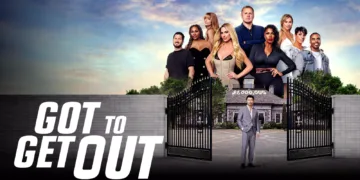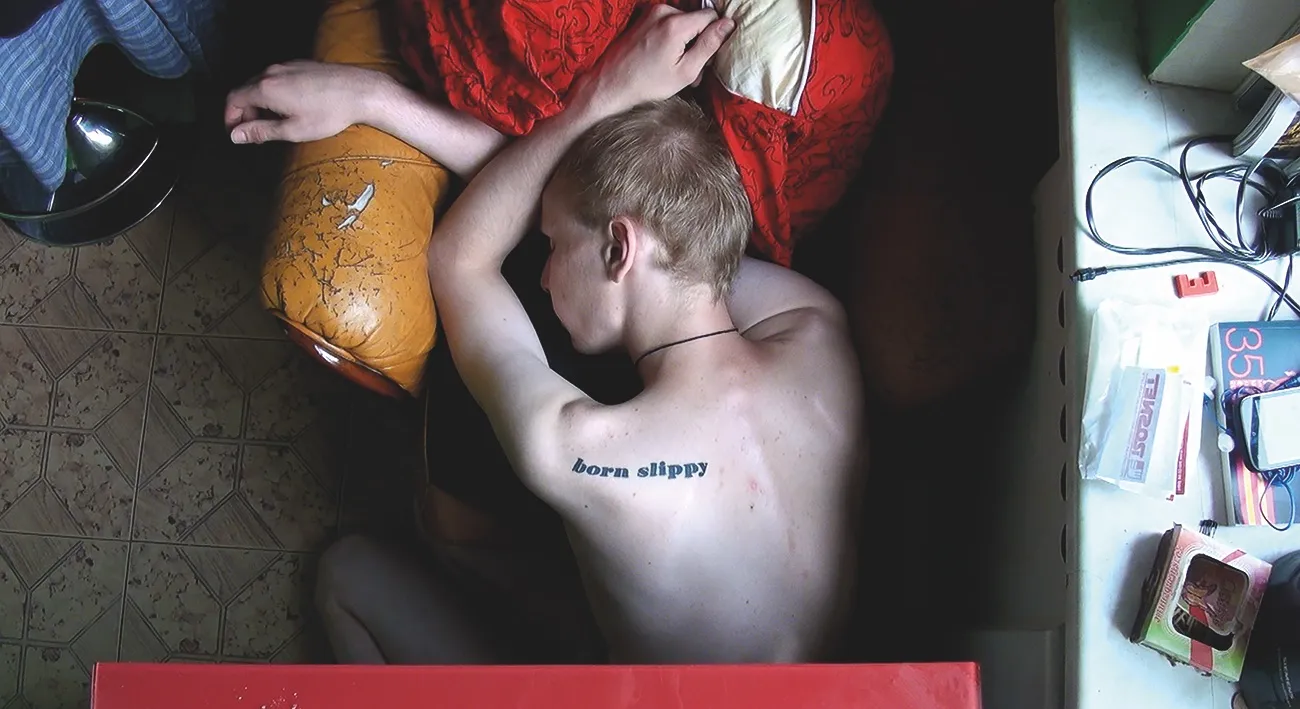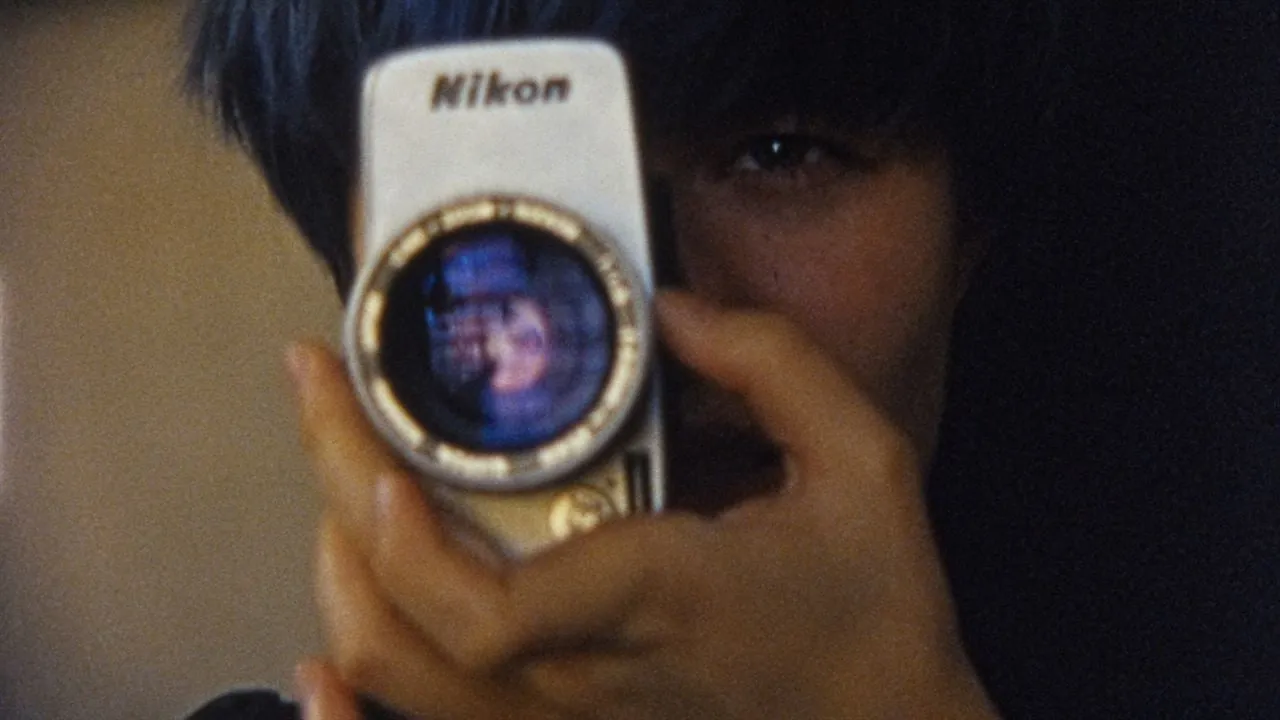In 2005, when Marusya Syroechkovskaya was 16 years old and sure she wouldn’t make it, her life began to take shape. As a child in what she called the “Depression Federation,” she saw a generation filled with hopelessness. Friends of hers committed suicide or became addicted to drugs. When she met Kimi Morev, a character like Kurt Cobain who would become her partner and the subject of a documentary, her whole world changed.
The documentary follows a close journey of love, destruction, and life over 12 amazing years. From the first time they met on a grunge website to the end of their passionate relationship, Marusya carefully wrote down everything that happened. Their relationship went beyond a normal marriage because they loved music, were rebellious, and deeply understood each other’s inner turmoil.
Even though Marusya and Kimi came from pretty stable homes, they both got stuck in a cycle of hurting themselves. Heroin became a toxic thread that ran through their story, and in the end, Kimi gave in to her addiction. The video isn’t just about their problems; it’s also about how disappointed Russian teens and young adults were in the early 2000s.
The power of the movie comes from how real it is. Marcusya creates a visual time capsule using various cameras and editing methods, from simple Windows Movie Maker clips to complex digital edits. She turns a tragic event in her own life into a powerful artistic statement about a generation lost between political oppression and personal sadness.
The most emotional part of the video is when Kimi died in 2016, but it’s still more than just a memorial. It shows how resilient people are, how creative they can be, and how complicated it is for young people to deal with societal pressures that seem impossible to overcome.
Through her unwavering lens, Marusya turns personal pain into a story about love, life, and the strong human spirit that fights against systemic problems.
Shattered Dreams: The Psychological Landscape of Russian Youth
The documentary paints a disturbing picture of a generation suffocating under the weight of systemic hopelessness. Marusya Syroechkovskaya’s camera shows more than just personal problems. It also shows how young Russians are being psychologically attacked by their society.
Mental health turns into an important fight. Depression is not just a personal problem; it’s also something that a lot of people go through, and it’s almost like a language that everyone speaks. Suicide and self-harm become sadly normalized, and Marusya honestly names friends who gave in to these harmful urges. The mental landscape looks like a minefield, and just staying alive feels like an act of resisting.
Heroin addiction is more than just abusing drugs; it’s a last-ditch effort to escape reality. When Kimi and his friends are going through a lot of psychological pain, drugs help them feel better. The cycle of addiction is like a bigger picture of society falling apart, where normal ways to find hope seem to be stopped all the time.
The political background is a constant force that makes things hard. In the background, televised presidential statements play repeatedly, making it feel like everyone is under tight control. Putin’s words about being kind don’t make sense when young lives are being brutally crushed. The video does a great job of showing how political systems can destroy the minds of whole generations.
Our ideas about growth and success become mean jokes. Young Russians like Marusya and Kimi know that the promised futures and the real lives of people are very different. Their resistance shows up through art, music, and honest emotional expression. They use their pain to make strong social criticisms.
The movie goes beyond a single disaster to become a deep meditation on trauma passed down from generation to generation. It shows how political injustice seeps into people’s minds and turns hope into a radical act of survival.
Intimate Rebellion: Portraits of Survival and Connection
Marusya Syroechkovskaya becomes a complicated main character—a young woman born into wealth who is driven by a strong desire to write about the pain of her age. Her artistic spirit turns her problems into strong stories. Even though she comes from a wealthy family, she struggles with deep psychological problems. She learns to express herself through self-harm early on, and making movies and songs are important ways for her to stay alive.
Kimi Morev is the perfect example of a young Russian with a broken heart. Because his father died young and his bigger brother has been addicted for a long time, he represents the trauma of a whole generation. Underneath his rebellious exterior lies a sensitive heart. He enjoys Joy Division and Nirvana and shares Kurt Cobain’s spirit of passionate despair.
They have a friendship that goes beyond typical romantic stories. They’re not just friends but co-conspirators in survival because they both know how fragile life is. Their relationship becomes a lifeline, going back and forth between romantic desire and deep friendship. An unbreakable emotional thread stays strong even when people are physically apart.
The video doesn’t sugarcoat their relationship but shows it as it is. It becomes sad and heroic as they try to save each other from bad choices. Kimi’s heroin addiction and Marusya’s artistic strength make for a complicated situation in which they both count on each other and struggle on their own.
Family members, other musicians, and their wider social group play supporting roles that show a generation torn between personal goals and systemic oppression. Each relationship shows different levels of emotional complexity, demonstrating how personal stories are connected to bigger societal stories.
Ultimately, their story is about more than just them; it’s about how human relationships can change things.
Capturing Chaos: Visual Poetry of a Broken Generation
Marusya Syroechkovskaya turns personal records into a groundbreaking movie experience. Her directing style goes against typical documentary methods, making the story feel more like a live memory than a structured movie.
The visual landscape is shown through an amazing collection of personal footage, including home movies, early internet recordings, and camcorder recordings from 12 years of big changes. Each frame is filled with real life, catching moments that range from joyful celebration to deep sadness. Windows Movie Maker clips and complex digital editing are used to make a visual language that reflects how her generation’s experiences are broken up.
The way she edits is like a character in itself. The story moves quickly with the help of fast-cutting and images that look like scrapbooks. Archival footage of presidential speeches and street protests is mixed in with private moments of people’s lives, showing how people’s lives always navigate bigger political landscapes.
The voice-over introduction is a great example of how to tell a story. With an uncanny ability to articulate, Marusya takes viewers through her world while being funny, sad, and extremely honest. She turns her pain into a comment on all of us, which makes her Russian experience feel like it has a universal message.
Sound design is now an important part of telling a story. Punk and hardcore soundtracks are mixed with intense drone scores from pixel transformations to make an auditory picture of emotional turmoil.
When she mixes personal and social stories, Syroechkovskaya creates more than a documentary. She creates a living, breathing time capsule of a generation’s collective awareness.
Crafting Emotion: Visual and Sonic Storytelling in “How to Save a Dead Friend”
For Marusya Syroechkovskaya, the documentary is a raw, emotional trip through memory and technology that turns personal files into a profound cinematic experience. Over twelve years, she used several cameras to record her relationship with Kimi Morev through a changing technological environment that reflected how their story changed over time.
The movie looks like a playground for nostalgia, mixing old internet graphics with personal video. Animations made in Windows Movie Maker are mixed with complex digital effects to create a simple and complex look. These choices about style aren’t just fancy tricks; they’re emotional channels that let Syroechkovskaya explore deep issues like addiction, loss, and generational sadness.
Creative sound design adds another layer to the story. The documentary uses a computer program that turns images into sound to make drone scores that pulse with what sounds like an electronic heartbeat. Punk and hardcore tracks mixed in with these noises show how rough the main characters’ inner lives are. A particularly haunting moment involves a version of a Joy Division song that serves as the relationship’s emotional soundtrack.
Aerial shots of Moscow’s tall apartment buildings transform them from ordinary cityscapes into symbolic spaces that look like dreams and show how precarious a generation’s lives are, stuck between hope and destruction. Digital changes made to Kimi’s picture by Syroechkovskaya, in which her fingers trace memories and make music, become powerful meta-narrative moments of remembering and changing.
The technical work, especially the editing by Syrian Qutaiba Barhamji, allows for combining clips shot with different cameras and at different times. This creates a visual story that flows together and feels personal while also being widely relevant.
The movie is full of symbols, from the cats that show up repeatedly to represent friendship to the extreme scenes like body hanging that show how the characters are feeling. Each frame is carefully put together to make an emotional object. This turns personal records into a larger cultural statement about Russian youth, resilience, and life today.
Syroechkovskaya doesn’t just record; she uses sound and image techniques beyond standard documentary formats to turn personal trauma into a powerful artistic statement.
Shadows and Sparks: Navigating Emotional Landscapes
The documentary by Marusya Syroechkovskaya goes deep, showing the raw emotions of a youth stuck between hopelessness and defiance. Through her view, she shows a world where being open isn’t a sign of weakness but a deep way to stay alive.
Mental health becomes an important part of this story. Kimi’s breakdown during his fifth stay in a mental hospital isn’t just a personal crisis; it’s also a visceral representation of the fight of a whole generation. Scenes of drug use and self-harm aren’t made to shock but are shown with a delicate humanity that speaks to greater problems in society.
The movie is all about emotional conflicts. Happy soccer parties are too close to times of deep darkness to be comfortable. A holiday dinner turns into a battleground between the warmth of family and the boring talks of politicians on TV. These contrasts show how fragile hope is in a society that seems to be built to break people’s spirits.
Under the surface of Marusya and Kimi’s addiction and depression lies a tender relationship that is incredibly strong. In a way that goes beyond typical love stories, their relationship shows how people can connect even in the worst situations. They have a strong bond that can’t be broken, a quiet revolt against what Syroechkovskaya calls the “Depression Federation” background.
The inner world is complicated. The characters’ problems aren’t just about being poor or left out; they show a deeper disappointment with society’s claims of progress and equality. Human stories and larger political realities come together in each frame to make a nuanced look at generational trauma.
In the end, the film isn’t just about death. It’s an obscene celebration of living and finding beauty and meaning in the strangest places.
Echoes of Resilience: Beyond the Screen
The movie “How to Save a Dead Friend” by Marusya Syroechkovskaya goes beyond the usual documentary style. It becomes a strong social mirror that shows how a generation feels, stuck between hope and sadness.
The film is more than just a biographical sketch; it becomes a profound cultural artefact—a time capsule that records the raw, unfiltered experience of Russian youth managing a social environment that is becoming more oppressive. Syroechkovskaya doesn’t just write about tragedies; she turns them into stories about survival and fighting that everyone can use.
The video is powerful because it is completely honest. The movie encourages viewers to think beyond common ideas about Russian society by showing the very personal battles of mental illness, drug abuse, and trauma passed down from generation to generation. References to Kurt Cobain and Joy Division are more than just nostalgic for music. They are also signs of a restless spirit fighting against society’s limits.
The film is technically groundbreaking and shows how personal records can be used to tell powerful stories. By combining camcorder video, digital editing, and experimental sound design in new ways, Syroechkovskaya makes a visual language that speaks directly to emotional truth.
The documentary has already made a big name for itself in modern movies around the world. Its Special Mention at Visions du Réel and showings at film festivals worldwide show how universally appealing it is. The movie isn’t just a personal account; it’s also a critical look at how society works.
The most important thing about “How to Save a Dead Friend” is that it shows love as a real, messy, life-changing force, not an idealized idea. Kimi and Marusya’s friendship becomes a symbol of strength, showing how connections with other people can give meaning to even the worst situations.
The video is a powerful example of how art can change things. It tells us that telling stories can be a way to fight back, heal, and connect deeply with other people.
The Review
How to Save a Dead Friend
The movie "How to Save a Dead Friend" is an honest look at youth, love, and survival in modern Russia. Marusya Syroechkovskaya makes a documentary that goes beyond traditional storytelling and is highly personal and meaningful to everyone. She makes a powerful movie experience that is both heartbreaking and hopeful by combining personal footage with larger social commentary. The film's strengths are its unwavering honesty, its creative use of multiple media, and the emotional depth of its story. Syroechkovskaya uses a personal tragedy to make an important artistic statement about mental health, family conflict, and how strong human connections are.
PROS
- Deeply personal and authentic narrative
- Innovative multimedia storytelling techniques
- Powerful emotional depth and vulnerability
- Unique insights into Russian youth culture
- Exceptional sound and visual design
- Compelling exploration of mental health and addiction
CONS
- Potentially challenging viewing due to heavy themes
- Some scenes might be emotionally overwhelming
- Limited contextual explanation of broader societal issues





















































